In today’s competitive business landscape, understanding customer pain points is essential for crafting marketing strategies, enhancing customer experiences, and driving overall growth. One powerful tool that businesses can leverage for this purpose is call tracking. This technology, which records and analyzes phone interactions, provides invaluable insights into customer behavior, preferences, and challenges. By converting raw data into meaningful insights, call tracking empowers companies to identify and address customer pain points more effectively.
Understanding Call Tracking and Its Benefits
Before delving into how call tracking helps identify customer pain points, it’s important to understand what call tracking is and why it’s beneficial. Call tracking is a process that involves using software to monitor, record, and analyse telephone calls between customers and businesses. It can track the source of the call, the length of the conversation, the keywords that led to the call, and other important data points. These metrics allow businesses to pinpoint which marketing efforts are driving phone calls and assess the effectiveness of their campaigns.
The primary benefits of call tracking include:
- Improved Marketing ROI: By understanding which marketing channels lead to the most valuable calls, businesses can allocate resources more effectively.
- Enhanced Customer Experience: Call tracking data helps businesses identify and respond to customer needs more promptly.
- Increased Sales and Conversions: With deeper insights into customer behavior, businesses can refine their sales strategies to convert more leads into customers.
- Better Customer Segmentation: Call tracking allows businesses to segment their customer base based on various factors, improving targeted marketing efforts.
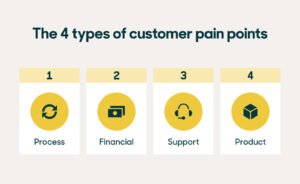
The Role of Call Tracking in Identifying Customer Pain Points
One of the most significant advantages of call tracking is its ability to uncover customer pain points. A pain point is a specific problem or challenge that a customer faces, which your product or service can solve. Identifying these pain points is crucial because it helps businesses understand their customers’ needs, tailor their offerings, and improve customer satisfaction. Here’s how call tracking can assist in this process:
1. Analyzing Call Transcripts for Common Issues
Call tracking platforms often include transcription services that convert audio conversations into text. By analyzing these transcripts, businesses can identify common questions, complaints, or issues that customers frequently mention. For example, if multiple customers call to ask about a recurring problem with a product or express frustration with a service, this trend can be spotted in the call data.
This analysis helps businesses identify specific aspects of their products or services that may be falling short. For instance, if many calls mention difficulty navigating a website or understanding a service feature, it indicates a need for clearer instructions or improved user experience design.
2. Detecting Trends Through Keyword Analysis
Keyword analysis is another powerful way that call tracking helps identify customer pain points. By tracking the keywords or phrases that lead to phone calls, businesses can discover which aspects of their offerings are most important to customers. If certain keywords are consistently mentioned during calls, it may signal areas where customers face challenges or need more information.
For example, if a company’s call tracking reveals that a significant number of calls are initiated after customers search for “how to use [product name]” or “troubleshooting [service feature],” this is a clear indicator that there may be a gap in customer education or product usability.
3. Spotting Customer Sentiment and Emotions
The tone of voice and emotional cues during phone conversations can reveal a great deal about customer sentiment. Advanced call tracking systems use voice analysis technology to assess customer emotions, such as frustration, confusion, or satisfaction. This technology can help businesses identify pain points by monitoring the mood and language used during calls.
For example, if calls to a customer support line have a high level of frustration or anger, it indicates that customers are likely struggling with a specific problem. By identifying these emotional trends, companies can take proactive measures to address customer concerns, such as updating FAQs, creating educational videos, or training staff to handle these issues more effectively.
4. Highlighting Gaps in Customer Service
Call tracking also helps businesses identify gaps in their customer service by analyzing call data and measuring response times. If call tracking data shows that customers frequently call in and wait on hold for extended periods or that there are repeated calls for the same issue, it may suggest that customer service processes need improvement. This can indicate an under-resourced support team, inadequate training, or unclear guidance provided to customers.
By addressing these service-related pain points, businesses can reduce call volume, improve response times, and increase customer satisfaction. This, in turn, fosters better customer loyalty and a stronger reputation.

Implementing Insights for Continuous Improvement
Once pain points are identified using call tracking, businesses need to take actionable steps to address them. Here’s how they can turn data into meaningful improvements:
1. Refining Marketing Messages
Call tracking can reveal if marketing messages accurately reflect customer needs and expectations. If customers frequently call with questions or concerns related to specific campaigns, it may indicate a disconnect between the message and the customer experience. Businesses can use this information to refine their marketing materials, making sure that they align more closely with what customers are seeking.
For instance, if a product or service is being marketed as “easy to use” but calls indicate confusion about how it works, the company can create more comprehensive tutorials or highlight features more clearly in promotional content.
2. Enhancing Product or Service Offerings
Identifying customer pain points can lead to product or service improvements. For example, if calls frequently address a particular feature that isn’t functioning as expected, businesses can prioritize fixes or updates. If customers call with feedback on a new feature that they find confusing or difficult to use, it may be worth investing in better user interface design or adding more in-depth instructions.
Implementing customer-driven changes not only helps resolve current pain points but also shows customers that their feedback is valued, which can strengthen brand loyalty.
3. Training and Empowering Staff
Call tracking data provides an opportunity to train and empower staff based on real interactions. By analyzing call transcripts and listening to call recordings, businesses can identify areas where customer service representatives may need more training. If certain types of questions or concerns frequently arise, staff can be trained to handle these situations with confidence and expertise.
Additionally, call tracking data can help establish best practices by highlighting successful interactions where customers’ issues were resolved effectively. This information can then be shared as training material for new hires or used for ongoing staff development.
Challenges and Best Practices
While call tracking offers immense benefits, businesses should be aware of some challenges and best practices to maximise its effectiveness.
1. Balancing Data with Privacy
Privacy concerns can arise when collecting and analyzing customer data. Companies must ensure that they comply with regulations such as the General Data Protection Regulation (GDPR) and the California Consumer Privacy Act (CCPA) when recording and storing calls. Clear consent should be obtained from customers, and data should be protected to prevent unauthorized access.
2. Integrating Call Tracking with Other Data Sources
For a holistic view of customer pain points, call tracking should be integrated with other data sources, such as website analytics, email marketing metrics, and CRM data. This integration can help businesses understand the full context of the customer journey and identify pain points that occur before and after a call.
3. Acting on Insights Promptly
Collecting call tracking data is only valuable if businesses act on the insights promptly. Identifying pain points is the first step, but resolving them in a timely manner is crucial. Implementing changes quickly can help improve customer satisfaction and prevent similar issues from arising in the future.
Leveraging Call Tracking Data for Competitive Advantage
Understanding customer pain points through call tracking doesn’t just benefit a business internally—it also offers a significant competitive edge. By extracting actionable insights, businesses can adapt faster to market shifts, outpace competitors, and deliver exceptional customer experiences. Here are some ways to turn call tracking data into a strategic advantage:
1. Benchmarking Against Industry Standards
Call tracking data can be compared with industry benchmarks to identify areas where a business is falling short or excelling. For example, if a company finds that their customers frequently call with questions that competitors’ customers don’t, this may point to a product or service issue that needs addressing. On the flip side, if a business consistently receives positive feedback or fewer service-related inquiries compared to industry peers, it can leverage this as a competitive differentiator in its marketing efforts.
2. Tailoring Competitive Marketing Campaigns
Insights from call tracking can be used to fine-tune marketing campaigns to address competitors’ strengths and weaknesses. For example, if customers express pain points that competitors haven’t yet solved, a business can position its products or services as the answer. This could involve highlighting features that alleviate common customer issues or developing targeted advertising campaigns that showcase the company’s commitment to solving customer pain points effectively.
3. Predicting Future Trends and Customer Needs
Call tracking data can be an early indicator of emerging trends. By analyzing recurring issues over time, businesses can predict future customer needs and adapt their offerings accordingly. For example, if calls start increasing due to a specific question or request, this could signal that a certain feature or service is becoming more important to customers. Proactively addressing these needs can ensure a business stays ahead of the curve and becomes a go-to provider in its industry.
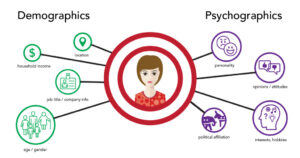
The Role of AI and Automation in Enhancing Call Tracking
With the advancement of technology, AI and automation are becoming increasingly integral to call tracking systems. These tools enhance data analysis and streamline the process of extracting insights, making it easier for businesses to identify customer pain points at scale.
1. AI-Powered Speech Recognition and Analysis
Modern call tracking systems equipped with AI-powered speech recognition can analyze call conversations much more efficiently than traditional methods. They can identify keywords and phrases in real-time, allowing businesses to quickly spot patterns in customer issues. For example, an AI-driven system might detect a sudden spike in calls mentioning a specific product defect or service disruption. This enables businesses to act fast and address customer concerns before they escalate into larger problems.
2. Automated Categorization of Calls
AI can automatically categorize calls based on their content and purpose, providing businesses with a clearer picture of what drives customer interactions. Calls can be grouped into categories such as “product questions,” “billing issues,” or “technical support.” This automated segmentation helps businesses identify specific areas where customers face challenges and improve their services accordingly.
3. Predictive Analytics for Pain Point Identification
Predictive analytics uses historical call data to forecast potential future pain points. By analyzing trends, businesses can anticipate customer concerns and take preemptive measures. For example, if predictive analytics indicates that customer service calls are likely to increase due to an upcoming product launch, a business can prepare by creating educational resources or ensuring sufficient support staff are available.
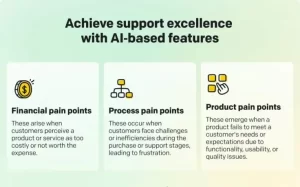
Case Studies: Real-World Examples of Call Tracking Success
To illustrate the tangible benefits of call tracking for identifying customer pain points, let’s look at some real-world case studies of companies that have leveraged call tracking effectively:
1. E-commerce Retailer: Enhancing Product Usability
An e-commerce retailer specializing in tech gadgets implemented call tracking to understand why customers were frequently calling for support. By analyzing call transcripts, they discovered that many calls were related to difficulty setting up a newly released product. This insight led them to create a comprehensive video tutorial and include more detailed setup instructions on their website. As a result, customer calls related to product setup decreased by 30%, improving customer satisfaction and reducing support costs.
2. Healthcare Provider: Improving Patient Communication
A healthcare provider utilized call tracking to identify pain points related to appointment scheduling and insurance queries. They found that many calls were initiated due to confusion over insurance coverage or difficulties with booking appointments online. With this data, the provider revamped their website to include an FAQ section that addressed common insurance questions and simplified the appointment booking process. This resulted in a 25% decrease in call volume related to these issues and increased patient satisfaction.
3. Financial Services Firm: Strengthening Customer Trust
A financial services firm used call tracking to analyze interactions with clients who were dissatisfied with certain features of their mobile app. The call tracking data revealed a common theme: customers were frustrated by a lack of clarity regarding transaction history and fees. The company used this insight to redesign the app interface, making it more transparent and easier to use. Not only did this reduce call volume, but it also strengthened customer trust and retention.
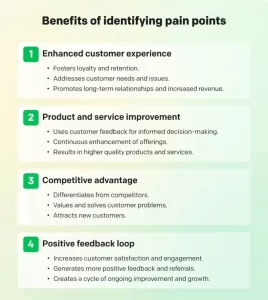
Future Trends in Call Tracking for Identifying Customer Pain Points
As technology evolves, call tracking continues to advance, offering even more sophisticated tools for identifying customer pain points. Here’s what the future holds:
1. Integration with Multi-Channel Data
The future of call tracking is likely to see deeper integration with data from various communication channels. By combining call tracking data with chat, email, and social media analytics, businesses will gain a more comprehensive understanding of customer pain points. This holistic view will enable them to craft more cohesive strategies for customer engagement and support.
2. Voice AI and Natural Language Processing (NLP)
Advancements in voice AI and NLP will allow call tracking systems to understand and interpret customer language with even greater accuracy. This will enable businesses to identify nuanced pain points, such as customer frustrations expressed indirectly or in ambiguous terms. The ability to detect these subtleties will be crucial for companies aiming to refine their customer service and product offerings.
3. Real-Time Pain Point Resolution
With more sophisticated call tracking tools, businesses will be able to resolve customer pain points in real time. For instance, AI-driven analysis can alert customer service agents during a call if it detects signs of frustration or confusion. This enables agents to take proactive measures, such as offering solutions or transferring calls to specialized departments, before the situation escalates.
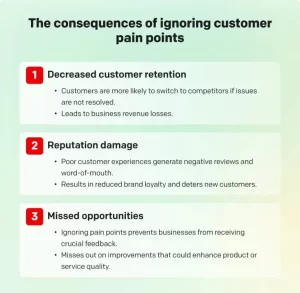
Harnessing the Full Potential of Call Tracking for Customer Insights
The power of call tracking in identifying customer pain points cannot be overstated. By analyzing call data, businesses can pinpoint specific challenges customers face, enabling them to take targeted actions to improve products, services, and overall customer experiences. From speech recognition and predictive analytics to real-world case studies and future trends, call tracking is an essential tool for companies that want to stay ahead in today’s competitive market. By leveraging this technology, businesses can build stronger, more lasting connections with their customers and ensure continuous growth.



